UFOs, UAPs & Aliens – News, Sightings, and Disclosures
Real or Fake UFO? An Expert’s Guide to Debunking Common Sightings
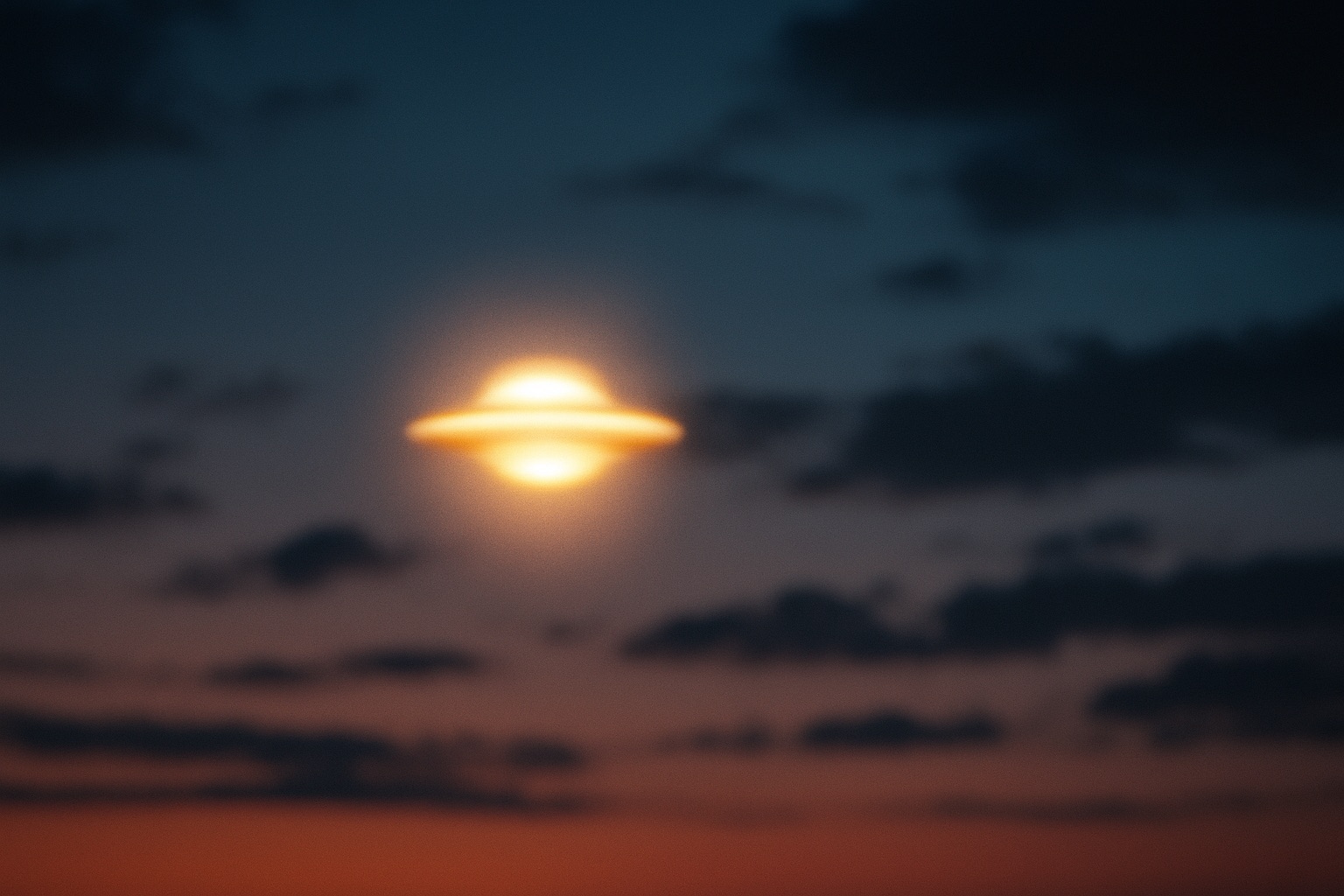
A special contribution from Mr. Hiroshi Kitajima, Director and CEO of the Space Phenomena Observatory Center (SPOC), who shares insights from the automatic observation robot “SID-1” and discusses the latest in UFO phenomena.
Have you ever seen a strange light in the sky and wondered if you were witnessing a true Unidentified Flying Object (UFO)? With the rise of smartphones and social media, photos and videos of mysterious aerial phenomena are more common than ever. But how many of these are genuine Unidentified Aerial Phenomena (UAP), and how many are something far more ordinary?
The truth is, most supposed UFO sightings—over 90% of them—are not “unidentified” at all. They are what we in the field call Identified Flying Objects (IFOs). These are easily explainable artificial objects or natural phenomena that are simply misidentified.
In an age of digital manipulation and viral content, knowing how to distinguish between a credible sighting and a fake is crucial. Spreading misinformation, even unintentionally, can be embarrassing. This guide, based on years of analysis at SPOC, will arm you with the knowledge to protect yourself from common traps and hoaxes.
The Usual Suspects: Common UFO Misidentifications
The list of objects and phenomena mistaken for UFOs is extensive. It includes everything from meteors, fireballs, and planets (especially Venus) to bright stars, mirages, birds, aircraft, and drones. Even mundane items like weather balloons, kites, and floating debris can fool the untrained eye.
To accurately identify these requires experience and sometimes sophisticated image analysis software. Let’s break down some of the most frequent culprits that appear in supposed UFO photos and videos.
1. Halation: The Deceptive Glare from Aircraft and Birds
One of the most common sources of UFO reports is halation. This occurs when sunlight reflects off the metallic body of a helicopter, airplane, or even a bird, creating an intensely bright, often disc-shaped, flash of light. The object itself becomes obscured by the glare, leaving behind a mysterious, glowing shape that looks otherworldly. These brief, brilliant flashes are responsible for a huge number of “UFO” photos.
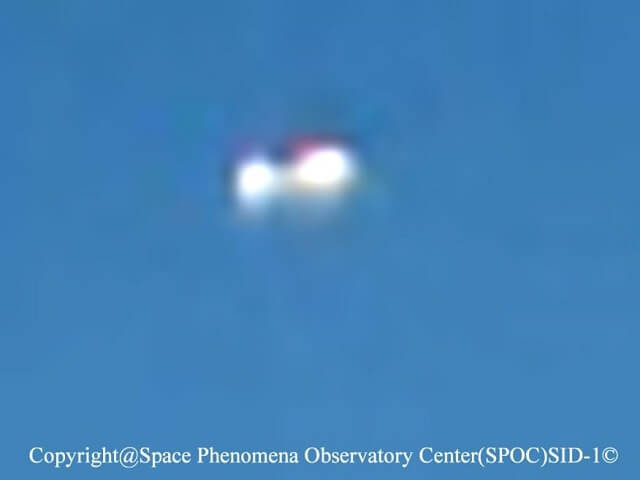
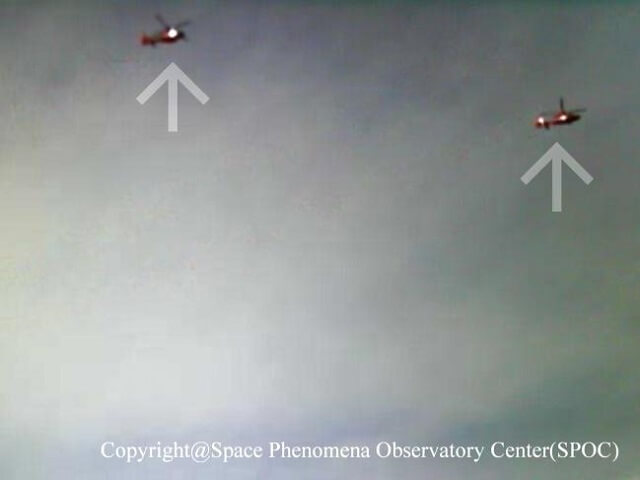
2. Contrails and Short Contrails: The “Cigar-Shaped UFOs”
Another frequent misidentification involves aircraft contrails (the line-shaped clouds of ice crystals left by high-altitude jets). When illuminated by the sun, especially at dawn or dusk, a contrail can appear as a solid, glowing, elongated object moving across the sky—often mistaken for a “cigar-shaped UFO.” Short contrails, or “shortcons,” are even more deceptive as they can look like a self-propelled object moving and then vanishing.
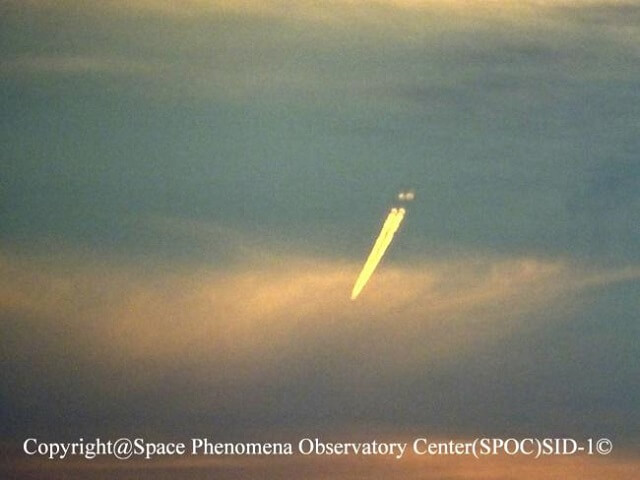
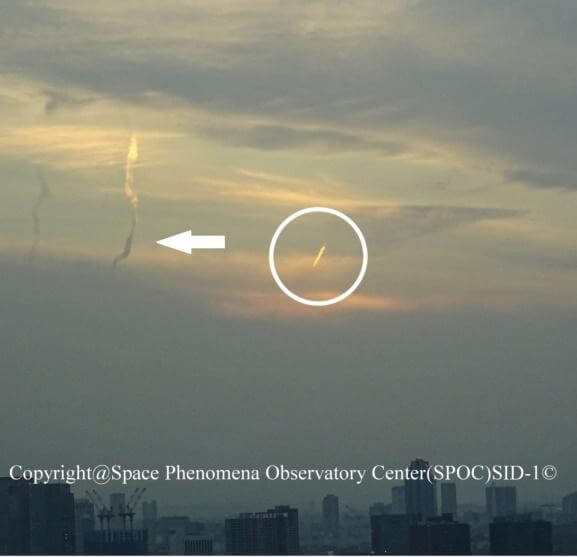
Pro Tip: If you suspect an object is an aircraft, you can verify it. Flight tracking services and radar data apps allow you to check for all non-emergency air traffic in a specific area, both in real-time and historically.
3. Camera Tricks: Lens Flares and Ghosting
Sometimes, the “UFO” isn’t in the sky at all—it’s inside your camera.
Lens Flare: This happens when a bright light source, like the sun, shines directly into the lens. The light scatters and reflects inside the camera, creating hazy or starburst-like patterns.
Ghosting: This is a specific type of flare where you see a faint, often geometric or orb-shaped, image of the light source or the lens aperture itself in the photo.
These artifacts are especially common when shooting towards the sun or bright lights at night and are frequently misreported as UFOs.
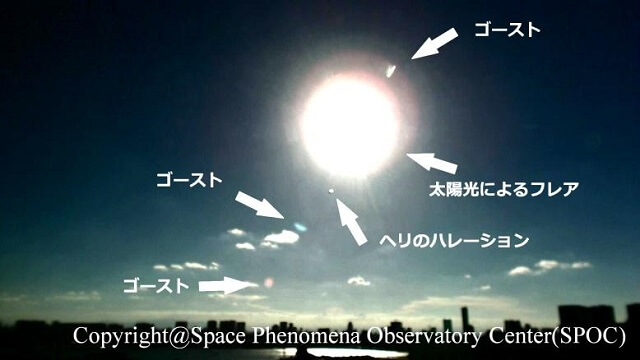

4. The Helicopter Illusion
At night, helicopters are a major source of UFO reports. From a distance, the sound of the rotors may be inaudible, and all you can see is the craft’s powerful navigation and anti-collision lights. These bright, sometimes hovering or slow-moving lights are classic UFO look-alikes. In a major city like Tokyo, for instance, dozens of helicopters fly across the sky every single night.
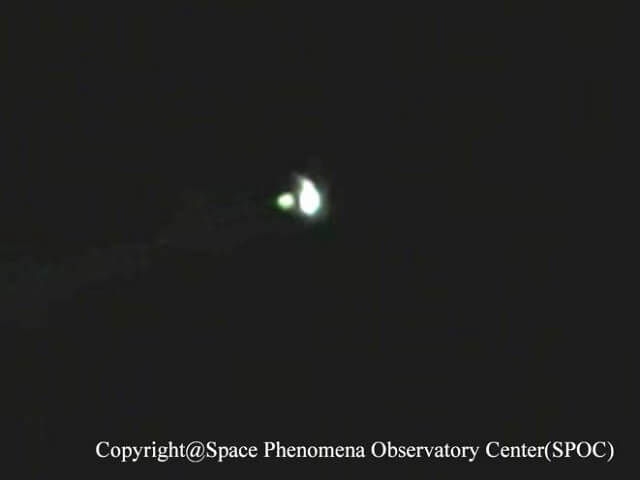
A Basic Guide to Spotting Fakes
With today’s powerful image and video editing software, creating a convincing fake has never been easier. However, there are some fundamental red flags to watch out for.
It’s Too Perfect: Ironically, an extremely sharp, clear, and perfectly focused image of a supposed UFO is often a sign of a fake. Capturing a clear shot of a suddenly appearing, fast-moving object is nearly impossible, even with modern autofocus (AF) technology. AF systems struggle to lock onto erratically moving targets.
It’s Just a Dot in the Dark: A single, small point of light in a pitch-black sky is almost always a conventional object like a helicopter, a planet (Venus is a frequent offender), or a distant aircraft.
There’s No Context: A legitimate UFO report should include crucial data: location, date, time, weather conditions, the position of the sun, and the object’s relation to its environment (e.g., is it over the ocean, mountains, or a city?). If the person sharing the image cannot provide this information, its value as evidence is virtually zero.
The Advance of Verification Technology
While fakes are becoming more sophisticated, so are the tools to detect them. Advanced image analysis techniques, often used in forensic science and digital crime prevention, can now be applied to UFO photos.
Leading the way in this field is MUFON (the Mutual UFO Network), one of the world’s largest and most respected civilian UFO research organizations. They use a suite of specialized image processing tools to determine if a photo has been digitally altered. At the Space Phenomena Observatory Center (SPOC), we were the first in Japan to introduce these same cutting-edge analytical tools to verify the authenticity of UFO/UAP imagery.
By combining critical thinking with modern technology, we can cut through the noise and focus on the small percentage of cases that remain truly unexplained. The next time you see a strange object in the sky, keep these points in mind—you’ll be better equipped to separate fact from fiction.
View all articles by Hiroshi Kitajima
※ Unauthorized reproduction, video creation, and uploading of this article's content to YouTube, blogs, or other platforms is strictly prohibited.
Related Articles
Popular Series
This is the page for Real or Fake UFO? An Expert’s Guide to Debunking Common Sightings. Find the latest news about Misidentification and more on TOCANA - the paranormal news media that stimulates your curiosity
UFO & UAP Latest Articles
The JAL Flight 1628 UFO Incident: Declassified Files Reveal a 50-Minute Encounter Over Alaska
2025.09.09 23:00 UFO & UAP


